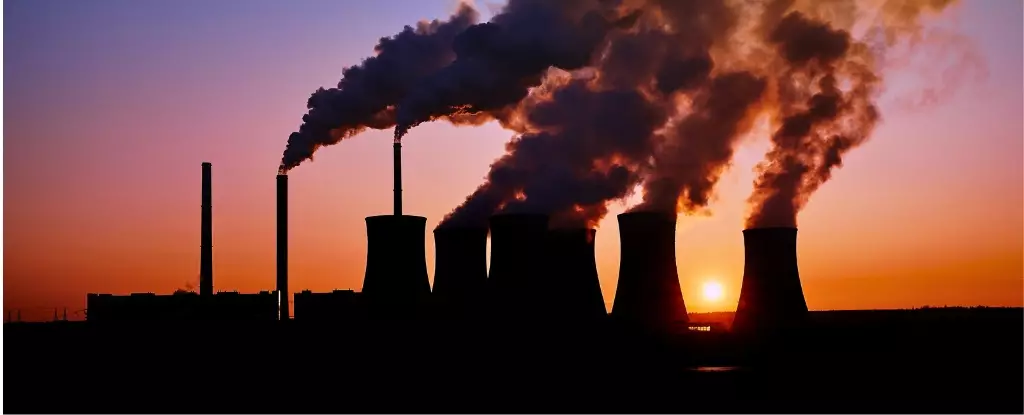The ongoing climate crisis has reached alarming new heights, as recent studies indicate that Earth may have crossed the critical threshold of 1.5°C of global warming. These findings underscore the urgent need for humanity to confront the intensifying climate emergency and to adopt transformative actions to mitigate its impacts. The 2015 Paris Agreement established a crucial framework, where nations committed to limit global temperature rise to well below 2°C, with aspirations to contain it to 1.5°C above pre-industrial levels. However, as analysis reveals, the present trajectory indicates that achieving this goal may no longer be feasible.
In 2024, global temperatures surged to approximately 1.6°C above late-19th-century averages, marking the hottest year on record. Although annual fluctuations are a characteristic of climate data and should not singularly define long-term trends, the evidence provided by two independent studies from Europe and Canada paints a concerning picture. Both studies relied on extensive historical climate data and employed varying methodologies to address one fundamental question: Are we witnessing the early signals indicating a breach of the 1.5°C threshold?
The European study focused on long-term warming patterns, observing that once a specific temperature threshold is attained, subsequent decades typically experience similar warming levels. On the other hand, the Canadian research analyzed month-to-month temperature changes and highlighted that consecutive months surpassing the 1.5°C mark could suggest a sustained shift in climate behavior. This dual approach amplifies the urgency of the findings.
Understanding Year-to-Year Variability
It is critical to note that the climate system operates with inherent variability. The spike in global temperatures in 2024 was influenced by both anthropogenic factors and natural phenomena like the El Niño climate pattern. With its diminution, it is anticipated that 2025 may witness a slight decrease in temperatures. However, as this variability underscores, individual years exceeding the 1.5°C threshold should not be dismissed as mere anomalies but rather as indicative of an evolving and potentially destabilized climate system.
As we seek to comprehend what these temperature surges signal for the future, it becomes imperative to highlight the severe risks embedded within surpassing the 1.5°C benchmark. Scientists predict that crossing this limit will trigger catastrophic disruptions to ecosystems and human systems alike, exacerbating the already dire consequences of climate change.
Tragically, despite the repeated warnings from climate scientists, global greenhouse gas emissions have seen a continued upward trend, with a staggering increase of around 50% since the Intergovernmental Panel on Climate Change (IPCC) issued its first report in 1990. Achieving net-zero emissions is not merely aspirational but is essential in reversing global warming; however, studies indicate that even with immediate and stringent reductions, humanity is likely to remain above the 1.5°C threshold.
To envision a future where we can achieve a cooler planet, we must entertain the notion of “net-negative emissions,” where we actively remove more greenhouse gases from the atmosphere than we generate. This monumental task will demand collaborative international effort and innovative technological advancements.
The tangible impacts of climate change are already visible worldwide. Regions like Australia demonstrate that the consequences of 1.5°C of warming since 1910 have led to severe biodiversity loss, particularly within unique ecosystems such as the Great Barrier Reef. The increasing frequency of extreme weather events, scorching heat waves, and rising sea levels are not mere statistics but lived experiences that affect millions.
The intertwined nature of climate change also emphasizes the socio-economic implications, as those in vulnerable communities are often hit hardest by climatic disruptions. They bear the brunt of detrimental shifts in agricultural productivity, food scarcity, and health risks, requiring immediate and sustained global support.
While the studies serve as stark reminders of our deficits in combating climate change, they also illuminate pathways forward. Increasing investments in renewable energy technologies, a noticeable decline in fossil fuel utilization, and innovative solutions to curb emissions in traditionally polluting sectors signal potential progress. However, this progress must be scaled rapidly as we face the existential threat of climate change.
Addressing climate change will necessitate a concerted global approach, particularly in ensuring that wealthy nations assist the developing world — nations that stand to suffer the most severe effects from climate impacts. Past commitments need to be actualized into tangible actions, prompting a major overhaul of our energy systems and societal norms.
While the challenges loom large, hope still exists. The clarion call for swift and decisive action resounds louder than ever. Delays will not yield comfort; rather, they will incur greater damage. Moving forward with urgency is paramount for the future of our planet and the well-being of generations to come.


Leave a Reply